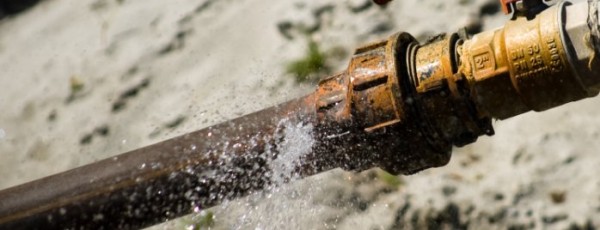Shut-off Valves – Use them or Lose them

Do you know where your shut-off valves are located? And when you find them, will they actually work?
When you get a phone call at 11:30pm informing you that water is gushing out of a broken irrigation head and flooding the adjacent building, do you know how to turn off the water? How about when a plumber needs to make a repair in one of the restrooms and she informs you that she will need to turn off all the water to the building at the meter if you cannot show her where the water shut-off is located?
One of the challenges of operating any facility is knowing where all the utility shut-off locations are. Even a small facility like a single family house will have at least one shut-off for the water, likely one for the irrigation system, one for natural gas, and a final shut-off for the electrical system. Electrical systems are fairly easy, so for this article we are going to focus on the “wet” utilities.
Knowing where your shut-off valves are located is just part of the challenge. Shut-off valves work like the breaks on your car; closing the valve stops the flow of water or natural gas through the pipe. Once you find the shut-off, if it does not actually work you are back to square one and you may have to turn everything off at the main valve. If the main valve is the valve that is frozen open, you have a major issue. And when the valve does not work because it just broke off, you now have two issues for the price of two.
Here is a plan to make sure you know where all your shut-off valves are located and are working properly:
- Find all of your shut-off valves. This is really not all that complicated. It requires figuring out where each utility comes into the property (one shut-off will always be at that location) and then determining if there are additional locations. These could be at individual buildings, at different levels or stacks of building or distribution locations, or at other logical points where the larger system is broken into smaller components. Irrigation will have a separate shut-off by the control valves.
- No really, all the valves. The main shut-off valves are great, but you also should identify all the smaller shut-off locations. Every sink and toilet will have angle stops which function as isolated shut-off valves for those fixtures. Gas fired appliances (ranges, furnaces, roof top equipment) will have gas shut-off valves at the appliance. Once you find the main valves, take the time to find all the smaller ones. Being able to turn off a utility to the smallest possible area means less disruption and fewer issues when you reopen the valve.
- Map the locations. You never get a call about shut-off locations when it is convenient; it will always happen in a panic, in the dark, probably when it is raining. And if it does not happen that way, you should still plan like it will. Once you track down all your shut-off valves, make a map that shows where they are and what they control. Post it in a location where others can use it even when you are off site.
- Test all the valves. We recommend that you should test every single shut-off valve monthly. I know, that seems like a lot, but you want to know that they will work when you need them to. In the industry turning the valve on and off is called exercising the valve. It is important because it will keep dirt, debris, and rust from building up in the valve body and preventing easy operation of the valve.
- Maintain your valves. If you test a valve and it does not work smoothly and easily, then the valve needs to be serviced. This generally should be done by a plumber; they will clean, lubricate, and adjust the valve so it will work when required.
- Get professional help. I know that you are tempted to add this to the “one more thing that I am not going to get to” pile. And shut-off valves are usually out of sight and out of mind, but when you need to use them you will thank me for nagging you. If you absolutely do not have the time or simply do not feel qualified to located, map, and exercise your shut-off valves then bring in someone to do it for you. You do not have to do this alone. Ask for help if you need it.
Shut-off valves are a critical building component that need to work properly when required. Taking the time to proactively locate, map, and exercise your valves will help to avoid cost and inconvenience in the future.
